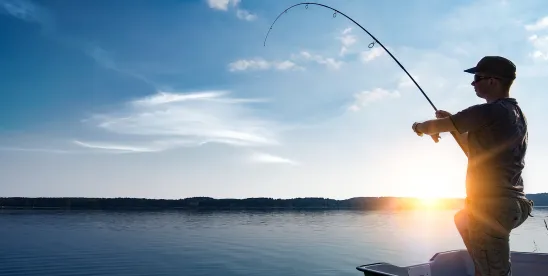On April 17, 2025, the U.S. Fish and Wildlife Service and the National Marine Fisheries Service (together, the “Services”) proposed to rescind their longstanding regulatory definition of “harm”, which has for decades served as a foundational element in ESA enforcement and permitting.
The ESA prohibits any action that “harasses, harms, pursues, hunts, shoots, wounds, kills, traps, captures, or collects” endangered or threatened species. Historically, the Services have defined “harm” to include “significant habitat modification or degradation which actually kills or injures wildlife by significantly impairing essential behavioral patterns, including breeding, feeding, or sheltering.” This expansive definition enabled the Services to regulate indirect impacts—such as habitat destruction—that may not immediately result in observable injury or death but nonetheless threaten species survival.
Under the Services’ proposed approach, “harm” would be interpreted more narrowly to encompass only affirmative, intentional actions that directly affect protected wildlife. As a result, incidental or indirect impacts—like habitat modification—may no longer trigger ESA liability or require Section 7 consultation. This change could significantly reduce the regulatory burden for developers, infrastructure planners, and federal permitting agencies, particularly where activities occur in or near designated critical habitats.
How Did We Get Here?
For decades, the Services’ definition of “harm” has been a linchpin of ESA enforcement. Because direct violations—like killing or injuring protected wildlife—are often nearly impossible to detect or prove, regulators have relied on habitat modification as a more practical and observable proxy for prohibited actions.
This approach won approval in Babbitt v. Sweet Home Chapter of Communities for a Great Oregon (1995), where a divided U.S. Supreme Court upheld the Services’ interpretation as reasonable under Chevron deference, though it noted other readings were possible. Indeed, Justice Antonin Scalia’s sharp dissent argued that the ESA’s active, purposeful verbs— “harass,” “pursue,” “shoot,” and “capture”—show Congress intended to prohibit only deliberate, direct acts against wildlife, not indirect effects like habitat degradation, which he saw as stretching the law beyond its text and burdening landowners unfairly.
The Services’ proposed rule now echoes Scalia’s view, presenting the narrowed definition of “harm” as a return to the ESA’s original intent. They argue this shift is necessary after the Supreme Court’s 2024 Loper Bright Enterprises v. Raimondo decision, which eliminated Chevron deference, and directed courts to decide for themselves the “single best reading” of a statute.
What This Means Going Forward
- Prospective Application Only. The proposed rule would apply only to future actions. Existing ESA authorizations—including Section 10 incidental take permits (ITPs), Section 7 consultation determinations, and past enforcement actions—would remain unaffected. However, new projects, especially those located near designated critical habitats, will need to reevaluate their ESA exposure under this revised framework.
- Impact on Permitting and Compliance. By excluding habitat modification from the definition of “harm,” the rule could substantially reduce permitting obligations and enforcement risk for industries like energy, infrastructure, and real estate development. Projects such as solar farms, data centers, pipelines, and wind installations—frequently sited in areas that may support listed species—might no longer require incidental take permits unless they involve direct, purposeful harm to wildlife.
- Impact on Section 7 Consultations. Federal agencies may also adopt narrower views of their obligations to consult under Section 7 of the ESA. If habitat impacts alone no longer constitute prohibited take, fewer projects may trigger the need for interagency consultation. This approach aligns with the Trump administration’s deregulatory efforts to streamline environmental reviews for major infrastructure and energy projects.
- Uncertainty and the Need for Guidance. Although the Services intend to clarify the scope of ESA liability, eliminating the regulatory definition of “harm” may introduce new uncertainties. Courts and regulated entities will be left to interpret the statutory language without agency guidance, potentially leading to inconsistent judicial outcomes and enforcement practices. Clear, timely guidance from the Services will be critical to ensure predictability and reduce legal risk during the transition.
- State-Level and Citizen Enforcement. Many states—including California, New York, and Massachusetts—have enacted their own ESA-style statutes with broader definitions of prohibited conduct. These states are likely to maintain expansive interpretations of “harm” regardless of federal changes, and they have already submitted critical comments on the proposed rule. Developers and landowners in these states must stay alert to stringent regulations, which can impose substantial restrictions beyond federal requirements. At the same time, citizen suits that have historically relied on habitat-based “harm” claims may face new hurdles in federal court if the Services’ narrower interpretation prevails.
Looking Ahead
The public comment period closed on May 19, 2025. The Services are now reviewing feedback and may revise the proposal before issuing a final rule. Given the far-reaching implications for ESA enforcement, federal permitting, and environmental litigation, stakeholders—especially those with projects in or near ecologically sensitive areas—should closely monitor this issue and be prepared for potential implementation hurdles and litigation challenges.




 />i
/>i

